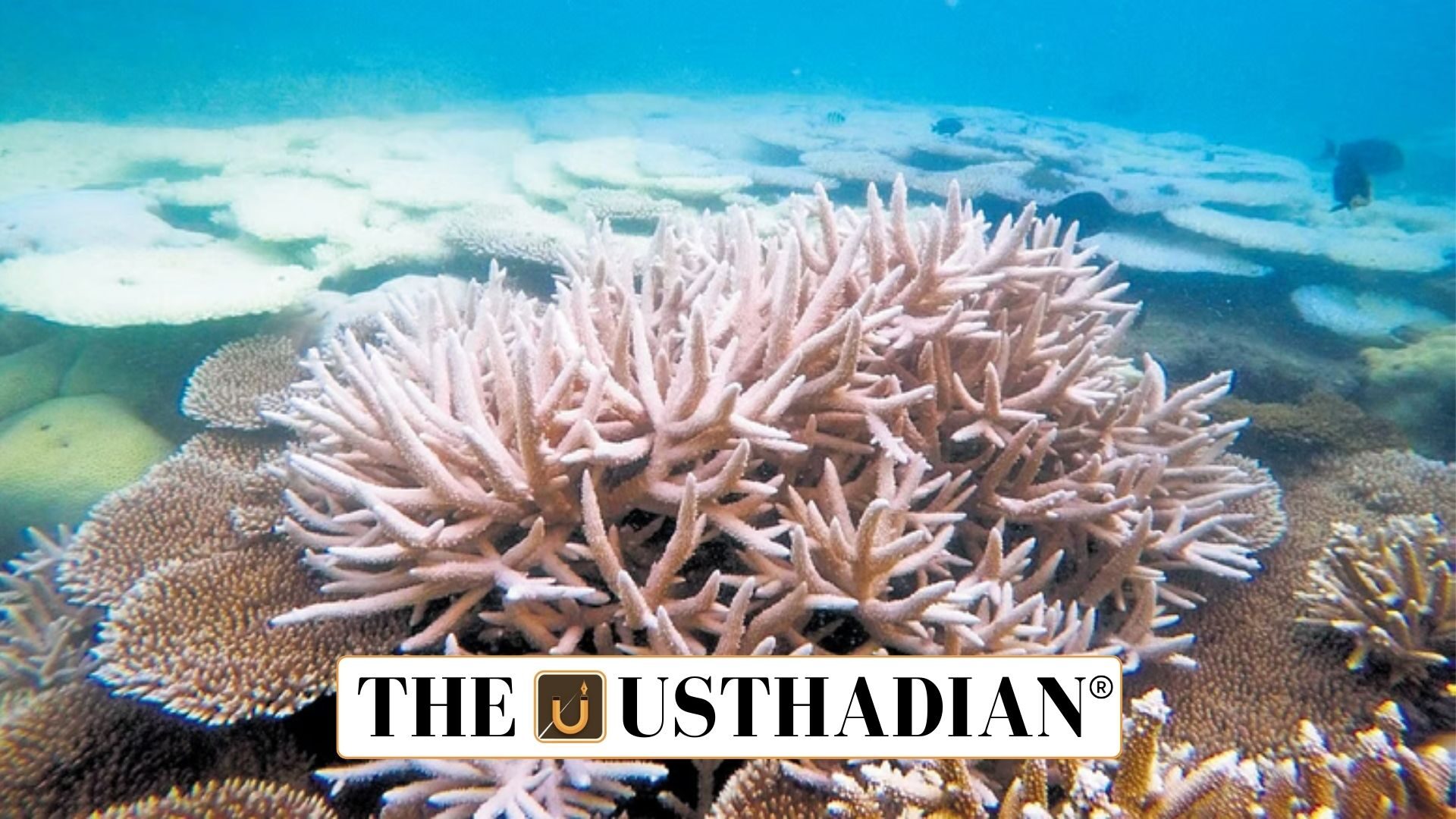Declining reef ecosystems
Coral Bloom Restoration in the Gulf of Mannar: The coral reefs of the Gulf of Mannar have been under stress for decades. Since the 1960s, rising sea temperatures, destructive activities such as coral mining, and other human pressures have caused widespread reef damage. This decline has endangered marine biodiversity and weakened the natural barrier protecting the coast.
Static GK fact: The Gulf of Mannar hosts India’s first Marine Biosphere Reserve, created in 1989.
Long-term conservation work
Scientists from the Suganthi Devadason Marine Research Institute (SDMRI) and the Tamil Nadu Forest Department have been carrying out coral recovery surveys for over two decades. Through transplantation, nearly 51,183 coral fragments from 20 different species were attached to 5,550 artificial bases, helping restore about 40,000 sq. m. of degraded reef habitat.
Success of transplanted corals
The transplanted corals displayed survival rates ranging between 55.6% and 79.5%. Among them, Acropora intermedia recorded the best results with an impressive 89.1% survival rate and a yearly growth of 16.7 cm after five years, highlighting the resilience of certain coral species.
Static GK Tip: Coral reefs cover less than 1% of the ocean floor but support nearly 25% of all marine life.
Role of artificial reef structures
Between 2015 and 2019, nearly 10,600 specially designed reef modules were placed underwater. These included Triangular Artificial Reefs (TAR) and Perforated Trapezoidal Artificial Reefs (PTAR). Over time, they helped boost coral recruit density, which grew from 1.23 in 2004 to 76.01 by 2020, showing how artificial structures can revive natural growth.
Ecological improvements
The condition of live corals also improved significantly. At restored sites, coverage increased from 2.7% in 2006 to 18.8% in 2020, while unrestored areas recorded only 1.8%. Fish populations showed remarkable recovery too, rising from just 14.5 in 2006 to 310.0 by 2020.
Rich marine biodiversity
Restored coral sites now support diverse species. Vaan Island hosts 63 types of fish, while Koswari Island supports around 51 species. These thriving habitats are vital for both ecological balance and the livelihood of coastal fishing communities.
Government-backed projects
To strengthen these efforts, the Tamil Nadu government launched the Tamil Nadu Sustainably Harnessing Ocean Resources (TNSHORE) initiative. Under this plan, about 8,500 artificial reef modules are to be deployed, along with measures to restore seagrass beds and protect vulnerable marine ecosystems in the Gulf of Mannar.
Static GK fact: The Gulf of Mannar Marine National Park, created in 1986, covers 21 islands along the Tamil Nadu coastline.
Static Usthadian Current Affairs Table
Coral Bloom Restoration in the Gulf of Mannar:
| Topic | Detail |
| Location | Gulf of Mannar, Tamil Nadu |
| Declared Marine National Park | 1986 |
| Marine Biosphere Reserve | Established in 1989 |
| Coral fragments transplanted | 51,183 from 20 species |
| Area restored | 40,000 sq. m. |
| Survival rate | 55.6% – 79.5% |
| Highest survival species | Acropora intermedia (89.1%) |
| Artificial reef modules deployed | 10,600 between 2015–2019 |
| Fish density increase | From 14.5 (2006) to 310.0 (2020) |
| Government project | TNSHORE project with 8,500 modules |








